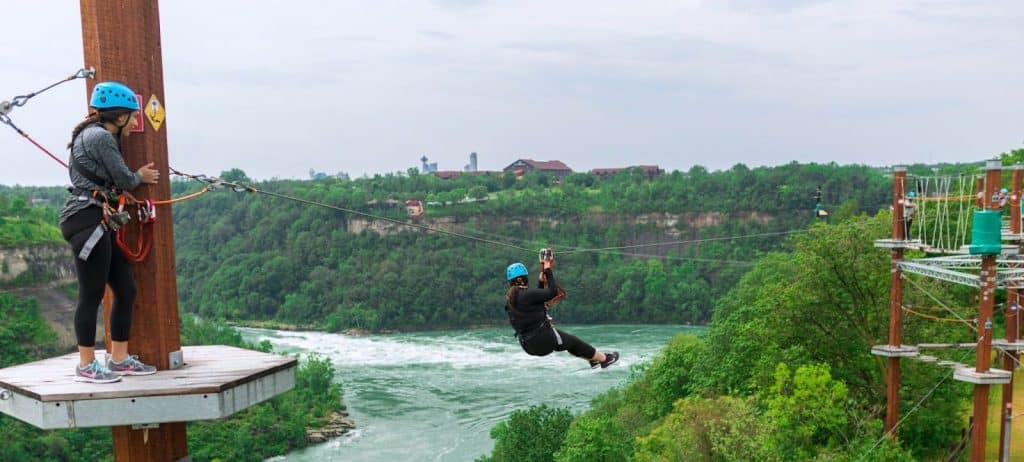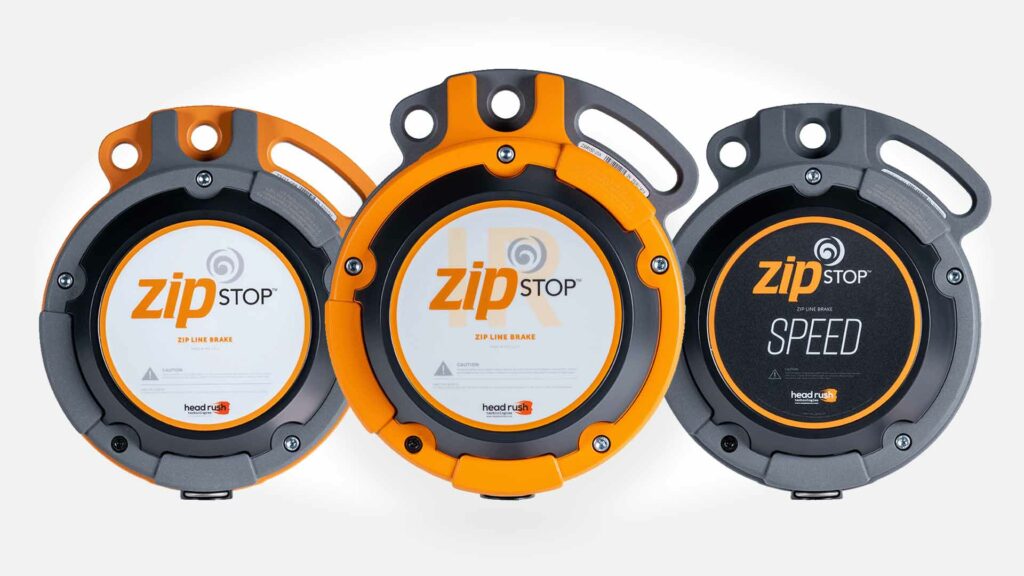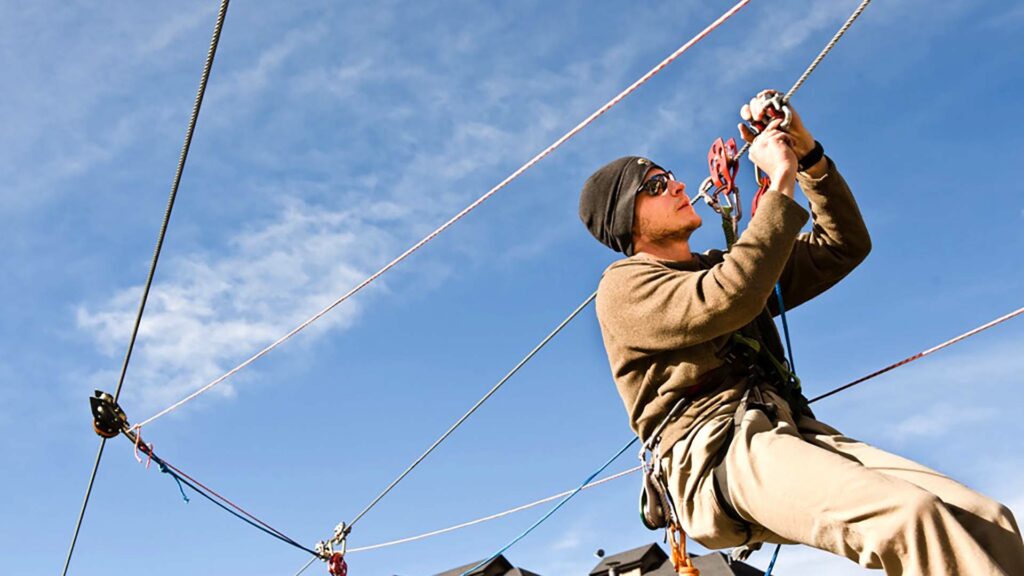As a zip line builder, installer or owner there are several factors to consider when designing and equipping your course. One piece of equipment that you'll want to carefully evaluate is zip line brakes. The type of brake you choose will dramatically affect your business's operations, revenue, guest experience, course design, risk management and more.
The two main types of zip line brakes are active and passive. Active zip line brakes depend on human intervention to initiate and control the braking process. Passive zip line brakes — including magnetic braking, spring braking and gravity braking — automatically activate without the rider or guide doing anything. To help you choose the right zip line brake for your project, let's start with an at-a-glance comparison of how each braking method performs by category.
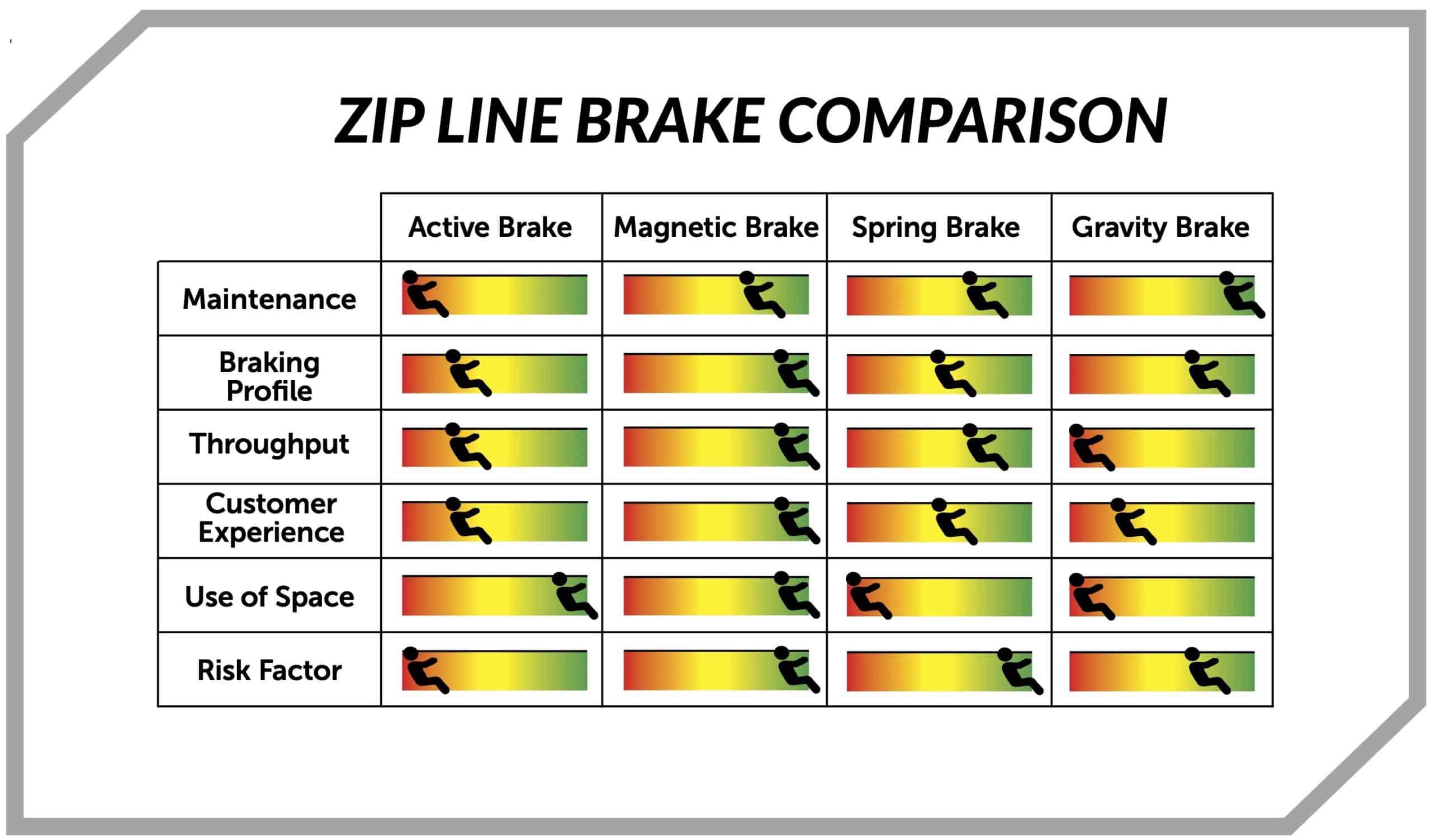
The further the rider is towards the green end of the spectrum, the better the brake does in that category. Likewise, the further the rider is towards the red end of the spectrum the worse the brake does in that category.
Want the details behind the chart? Keep reading for a full break down of the advantages and disadvantages of each zip line brake.
ACTIVE BRAKING
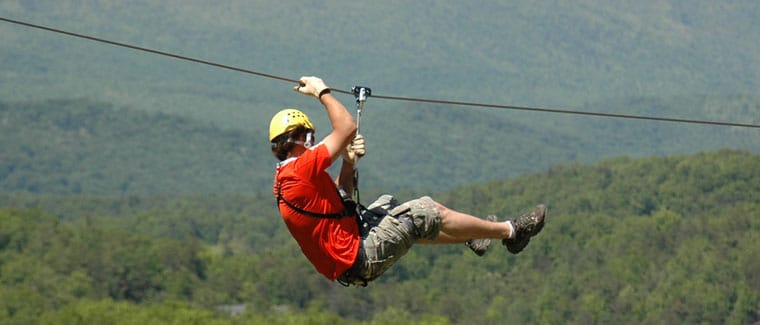
Active zip line brakes rely on human operation and friction. A standard active brake involves the rider braking with leather gloves or a brake pad. Staff can also operate active brakes through friction-based redirects or belay systems.
Maintenance
Due to the amount of friction needed to slow riders, on higher speed lines this type of system will require a lot of equipment maintenance and replacement.
Braking Profile
Because participants are in charge of braking themselves in an active braking system, the braking resistance and experience can be highly variable.
Throughput
If the rider or operator brakes too early or aggressively in an active braking system, they may not make it to the platform. When this happens, the entire group must wait for them to haul themselves to the end of the line or be retrieved by a staff member. Premature braking is a detriment to the efficiency of zip line operations.
Customer Experience
While active brakes may give riders and staff more participation in the experience, the likelihood of distraction or misapplication of the brake increases. This can have a negative effect on the customer’s overall experience.
Use of Space
Active braking is a very efficient use of space; however, maximum speeds must be kept to a minimum or lines must have a large runout to allow room for participants to actively brake and control their speeds.
Risk Factor
Active brakes can substantially increase the risk of injury to participants for several reasons. It is easy for participants to get lost in the excitement and adrenaline of the moment and forget braking instructions. Moreover, active brakes force the rider to put their hands and limbs close to fast moving zip line components. Proximity alone increases the risk that a participant will either get a friction burn on an exposed piece of skin or injure their hand by getting it caught in the rider trolley. These injuries are among the least severe injuries possible when dealing with active brakes. The worst possible injuries associated with active brakes are life-threatening.
PASSIVE MAGNETIC BRAKING
Head Rush Technologies' zipSTOP Zip Line Brake is in its own tier of passive zip line brakes. The zipSTOP is the only zip line brake on the market that uses magnetic braking. Magnetic braking relies on centrifugal force to create eddy currents that oppose the force of the magnets, providing resistance and slowing the rider. Because magnetic braking is friction-free with no contacting parts, it offers unrivaled cyclic endurance to perform ride after ride.
Maintenance
The use of eddy current magnetic braking technology eliminates the need for sacrificial braking components. Since there are no brake pads or any internal braking parts that rely on friction, the zipSTOP is long-lasting and needs less maintenance than friction-based brakes. It should be noted that because the zipSTOP is a life-safety device it must undergo a check-up by an authorized service center every year.
Braking Profile
A 33lb child and a 330lb football player will both experience the same comfortable deceleration thanks to the magnetic brakes found in the zipSTOP. This self-regulating design enables a smooth and consistent brake regardless of rider weight and speed.
Throughput
Magnetic braking is incredible for improving throughput. The zipSTOP automatically resets after every use so the brake is always ready for the next participant to descend. The throughput efficiency of the zipSTOP can be further enhanced when it is combined with other Head Rush zip line accessories.
Customer Experience
Thanks to the zipSTOP’s magnetic braking technology zip line operators can provide the same high-quality zip line experience to every participant regardless of weight. Plus, because the zipSTOP brakes for riders, that means less stress for riders and staff. The automatic reset reduces downtime too. This all adds up to more happy customers.
Use of Space
Passive magnetic braking is unique in the fact that it automatically adjusts braking force based on rider size and speed, resets by itself and does not use friction to provide resistance so it’s unaffected by environmental conditions.
Risk Factor
Automatic brake regulation and reset minimizes chances for human error and allows riders and guides to be more engaged in the experience.
PASSIVE SPRING BRAKING
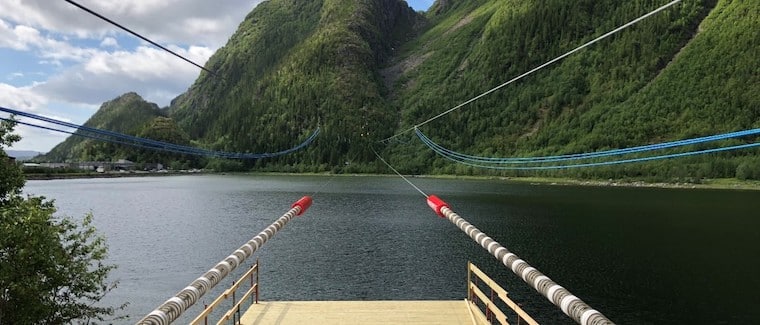
Spring brakes are some of the earliest passive brakes. Long banks of springs are stacked together to create an effective brake for incoming riders. Some may use progressive spring rates to smooth out the catch, at the expense of space, while others use a fixed spring rate which may be shorter but harsher. Most spring brakes permanently sit on the termination end of the line, but some are housed elsewhere and use redirection ropes to activate the springs.
Maintenance
While spring brakes are fairly simple mechanical systems, regular inspection is still needed. In certain environments corrosion will have to be evaluated regularly, as will the condition of padding which degrades in harsh environmental conditions. It is also worth noting that a full zip line inspection must be conducted where the springs move back and forth, which can be difficult based on limited access to the cable which is blocked by springs or may be detached from platform access.
Braking Profile
Different weight riders will have different braking experiences with spring brakes. Heavier riders are going to cause more spring compression and will rebound further. Lightweight riders will compress the spring less and will experience a more abrupt stop than heavier riders. This wide range of possible outcomes is magnified by environmental conditions leading to variable arrival speeds.
Throughput
Conventional spring brakes decompress and then push the rider back out in the direction they came from to bring them to a stop. Every second that a customer spends rebounding is a second that you could be using to get another customer through the course. These seemingly small inefficiencies quickly add up and make a significant impact on throughput.
Customer Experience
A variable braking experience and time spent bouncing around at the end of the line can mean lower levels of customer satisfaction for zip lines using passive spring braking.
Use of Space
Unlike most other zip line brakes, springs do not move on the line and cannot be moved out of the way. Large spring banks are permanently installed on the zip line, necessitating very large platforms or detached terminal structures. It is also necessary with standard spring brakes to have a high-tension zip line with a downhill slope all the way to the termination point, which can lead to increased build cost and maintenance over time.
Risk Factor
Springs are generally set up with many internal redundancies and, unless otherwise arranged, automatically reset after use. For this reason, they are very reliable, however care must be taken to avoid contact with the metal coils or properly pad the brake while still allowing inspection.
PASSIVE GRAVITY BRAKING
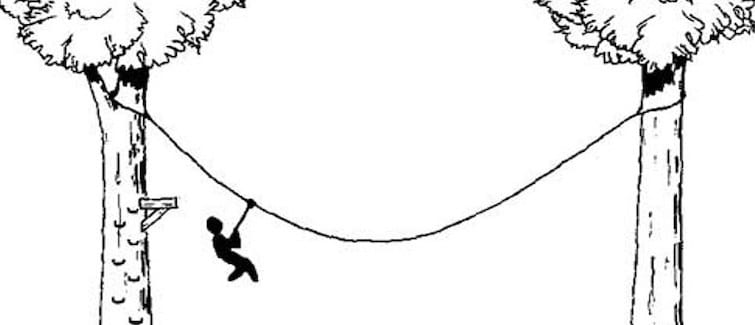
Photo credit: cornerstonedesignsinc.com
In the most traditional sense, a gravity zip line will be very loose and nearly match termination heights at both ends. A rider will accelerate quickly, then climb back up the loose cable and decelerate before reaching the termination end. After this the rider will pendulum back and forth until settling in the low point where they will be taken off by a ladder or similar method. Many zip lines will use a combination of gravity and other brake methods.
Maintenance
Gravity brakes are in fact the absence of any brake system, so there is no maintenance needed on the brake system itself.
Braking Profile
While gravity is a constant force and always reliable, it tends to be a less desirable braking method because of the time lost waiting for participants to come to a stop.
Throughput
The main drawback of gravity brakes is their low throughput. It takes time for a participant to ricochet back and forth enough to come to a stop. That time could be better spent sending another rider down the line.
Customer Experience
Rolling back and forth to slow down is the least appealing part of zip lining. The time it takes waiting for a gravity brake to slow a participant doesn't add value for the customer. Riders would rather spend less time waiting and more time zipping.
Use of Space
Gravity brakes require that a portion of the cable be dedicated to braking, which means that a portion of the cable and a portion of your facility is effectively being unused. This inefficient use of space makes for another frustrating shortcoming of gravity brakes.
Risk Factor
Gravity never fails, so a well-built gravity zipline is 100% effective in arresting rider motion. Risks can be introduced via hazards on the line or in the zip path due to the low throughput and use of ladders or other means to unload participants after riding.
SUMMARY
The four most common types of zip line brakes are active braking, passive magnetic braking, passive spring braking and passive gravity braking. Passive zip line brakes are superior to active zip line brakes. The main benefit of passive zip line brakes is that they eliminate the risk that participants will hurt themselves by improperly braking. Among passive zip line brakes, the zipSTOP stands alone as the most advanced self-contained zip line braking unit on the market due to its automatic regulating and resetting. Using wear-free eddy current magnetic braking technology, the zipSTOP is built to last season after season on the highest throughput zip lines in the world.
Want to speak to a member of our team about outfitting your zip line course with zipSTOP Zip Line Brakes? Get in touch here.


